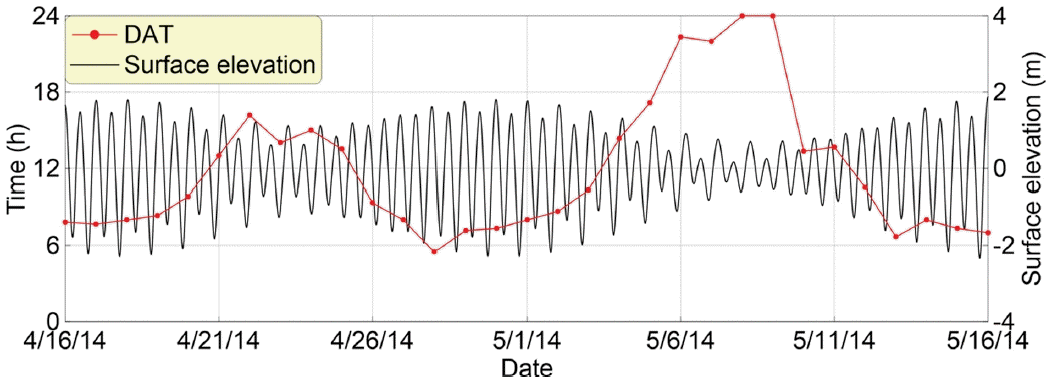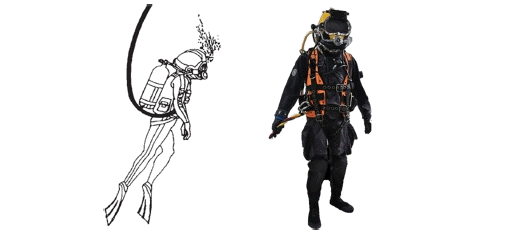Arieli, R., Arieli, Y., Daskalovic, Y., Eynan, M., Abramovich, A. (2006). CNS oxygen toxicity in closed-circuit diving: Signs and symptoms before loss of consciousness, Aviation, Space, and Environmental Medicine, 77(11):1153-1157.

Fan, S., Zhang, J., Blanco-Davis, E., Yang, Z., Yan, X. (2020). Maritime accident prevention strategy formulation from a human factor perspective using Bayesian networks and TOPSIS, Ocean Engineering, 210, 107-120.

Gerth, W.A., Doolette, D.J.. (2012). VVal-79 maximum permissible tissue tension table for Thalmann algorithm support of air diving (NEDU TR 12-01). Panama City, FL: Navy Experimental Diving Unit; Retrieved from
https://apps.dtic.mil/sti/pdfs/AD1215324.pdf.
Haldane, J.S. (1908). The prevention of decompression sickness, Journal of Physiology, 38(2-3):477-484.
Hwang, T., Seo, S.C., Jin, H., Oh, H., Lee, W.D. (2024). Effects of storm waves caused by Typhoon Bolaven (1215) on Korean coast: A comparative analysis with deepwater design waves, Journal of Ocean Engineering and Technology, 38(4):149-163.

Jin, H.S., Kang, H., Kim, M.G., Lee, M.J., Li, J.H. (2024). OGM-based real-time obstacle detection and avoidance using a multi-beam forward looking sonar, Journal of Ocean Engineering and Technology, 38(4):187-198.

Kim, M., Kim, S., Kim, T., Kim, J., Lee, W.D. (2025). Daily planning and management of SCUBA diving for underwater search and rescue considering tidal currents: A case study of the Sewol ferry disaster site, Journal of Coastal Disaster Prevention, 12(1):31-47.

Kim, M., Song, M., Park, J., Kim, S., Lee, W.D. (2023). Estimation of underwater workable time considering tidal currents: A review of diving equipment, Journal of Coastal Research, 116(Special Issue):433-437.

Kim, T., Lee, W.D. (2022). Review on applications of machine learning in coastal and ocean engineering, Journal of Ocean Engineering and Technology, 36(3):194-210.

Lee, P.M., Park, J.Y., Baek, H., Kim, S.M., Jun, B.H., Kim, H.S., Lee, P.Y. (2022). Underwater navigation of AUVs using uncorrelated measurement error model of USBL, Journal of Ocean Engineering and Technology, 36(5):340-352.

Lee, W.D., Kim, J., Kim, T., Kim, M. (2025). Surface-supplied diving system for underwater search and rescue operations at the Sewol ferry disaster site (Part II): Applicability evaluation and operational management strategies, Journal of Korean Society of Coastal and Ocean Engineers, 37(2):50-59.

Lee, W.D., Kim, T., Kim, J., Kim, S.K., Oh, H., Hwang, T. (2024). Experimental investigation on the drift and collision of containers induced by tsunami action on a wave absorbing revetment, Journal of Ocean Engineering and Technology, 38(5):282-293.

Levett, D.Z., Millar, I.L. (2008). Bubble trouble: A review of diving physiology and disease, Postgraduate Medical Journal, 84, 571-578.

Lippmann, J., Mitchell, S.. (2005). Nitrogen narcosis: Deeper into diving (2nd ed.). The Divers Alert Network.
Jeon, C., Knowles, S.G., Park, S.E. (2022). Disaster (continued): Sewol Ferry investigations, state violence, and political history in South Korea, History and Technology, 38(1):84-106.

Seo, M., Yeom, G.S., Lee, C., Lee, W.D. (2022). Numerical analyses on the formation, propagation, and deformation of landslide tsunami using LS-DYNA and NWT, Journal of Ocean Engineering and Technology, 36(1):11-20.

Seo, M.S., Bae, S.J. (2002). The study on the analysis of marine accidents and preventive measures, Journal of Fisheries and Marine Sciences Education, 14(2):123-134.
Thalmann, R. (2019). Development of the Exponential-Linear (EL) decompression model for safe diving, Journal of Underwater and Hyperbaric Medicine, 29(2):123-130.
U.S. Navy. (1957). United States Navy 1957 decompression tables. U.S. Government Printing Office.
U.S. Navy. (2018). U.S. Navy diving manual (Rev. 7). Naval Sea Systems Command.
Vann, R.D., Butler, F.K., Mitchell, S.J., Moon, R.E. (2011). Decompression illness, New England Journal of Medicine, 364(14):1365-1374.







